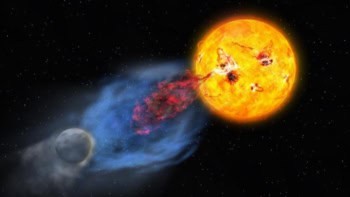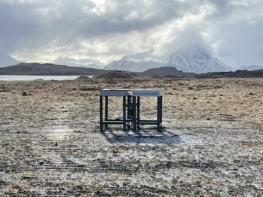A star that was "re-born" just ten years ago may already have started to become a white dwarf again according to new results from an international team of astronomers. Albert Zijlstra of Manchester University in the UK and colleagues have developed a new model to explain why the star - known as Sakurai's object or V4334 Sgr - has evolved a hundred times faster than expected (M Hajduk et al. 2005 Science 308 231).

Stars like the Sun generate energy as a result of nuclear fusion reactions in which hydrogen nuclei fuse to form helium nuclei, which in turn undergo fusion reactions to produce carbon. As the star approaches the end of its life it ejects its outer layers into space to form a planetary nebula, before collapsing into a dense white dwarf. Most white dwarfs simply cool down over time but some can briefly re-ignite their helium, which makes them re-expand into giant stars for the second time. After this phase, which is calculated to last about 100 years, the stars contract again and become white dwarfs for good.
Using the Very Large Array in New Mexico, Zijlstra and colleagues elsewhere in the UK, Poland, United States, Belgium, Germany, Austria and Mexico have now detected radio emissions from inside the old planetary nebula of Sakurai’s object. According to the team, these emissions come from the ionisation of gases around the star – a process that requires temperatures of more than 20 000 K. These temperatures are much higher than those observed in the late 1990s and suggest that the star has started to contract and heat up again.
To explain the observations, the astronomers have developed a model in which convective mixing inside the star is suppressed. This means the star burns fuel lying closer to its surface and this, in turn, accelerates its evolution.
Zijlstra and co-workers have also found that the star has ejected a large amount of carbon from its inner core into space and speculate that such re-ignition events could be – along with supernovae – a major source of cosmic carbon. The measurement of identical carbon isotope ratios in meteorite inclusions backs up this hypothesis.
“Our models predict that Sakurai’s object will continue to reheat rapidly over the next decades and we will continue to observe the star to test our calculations,” Zijlstra told PhysicsWeb. “We also predict that after 2200 the star will evolve more slowly – but this prediction will take longer to test!”



